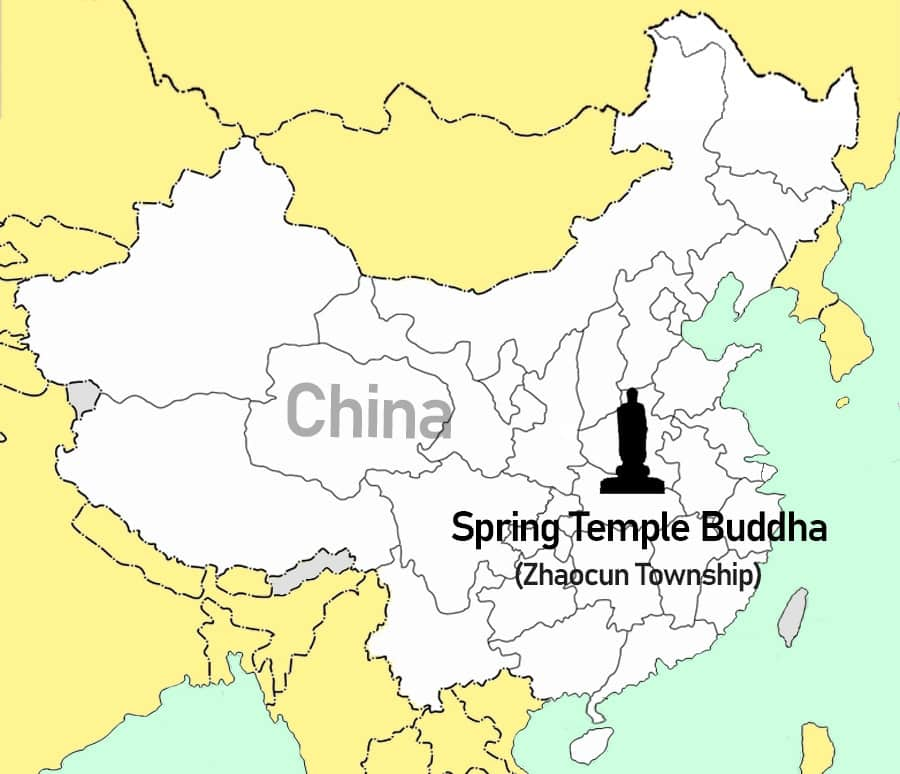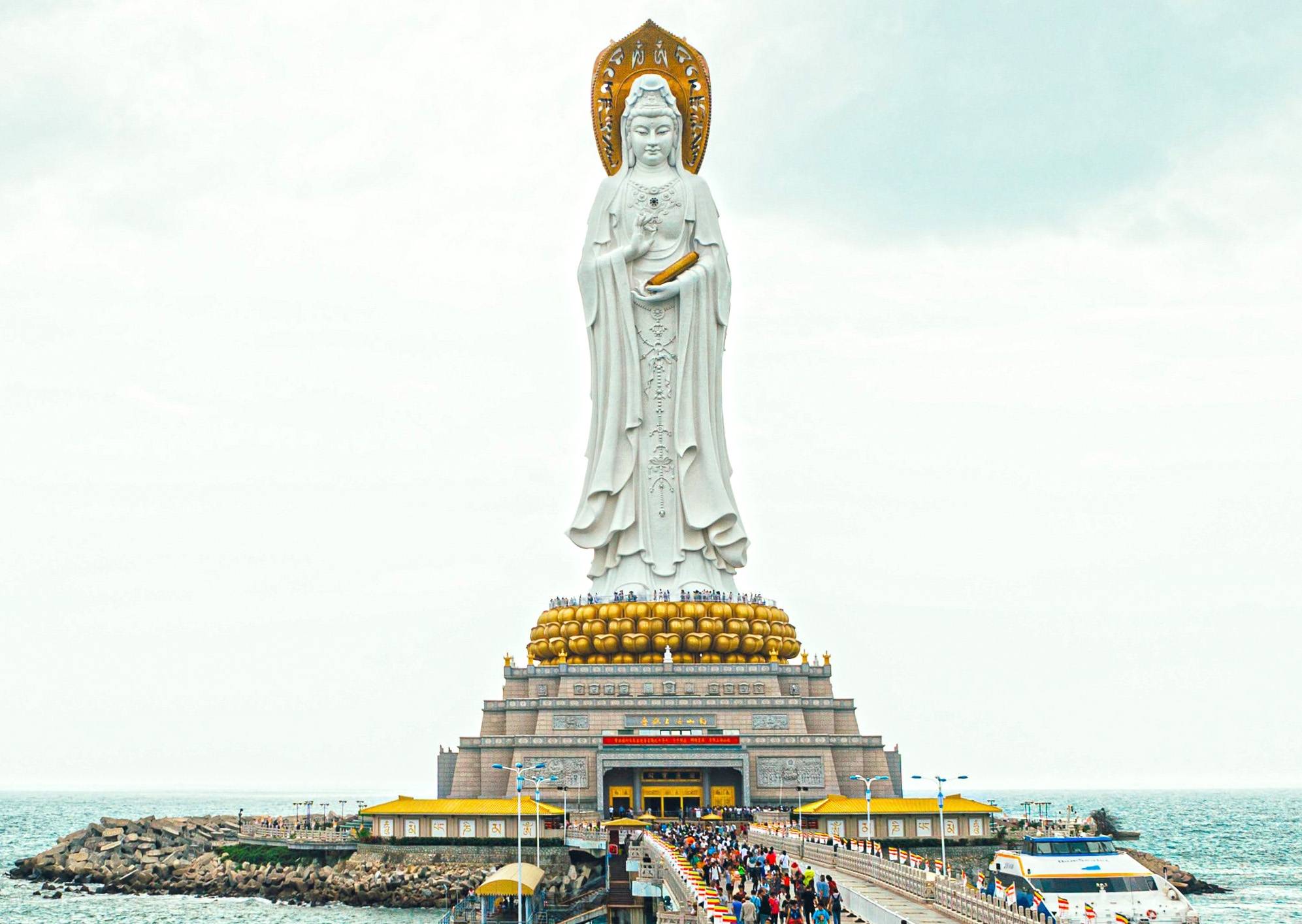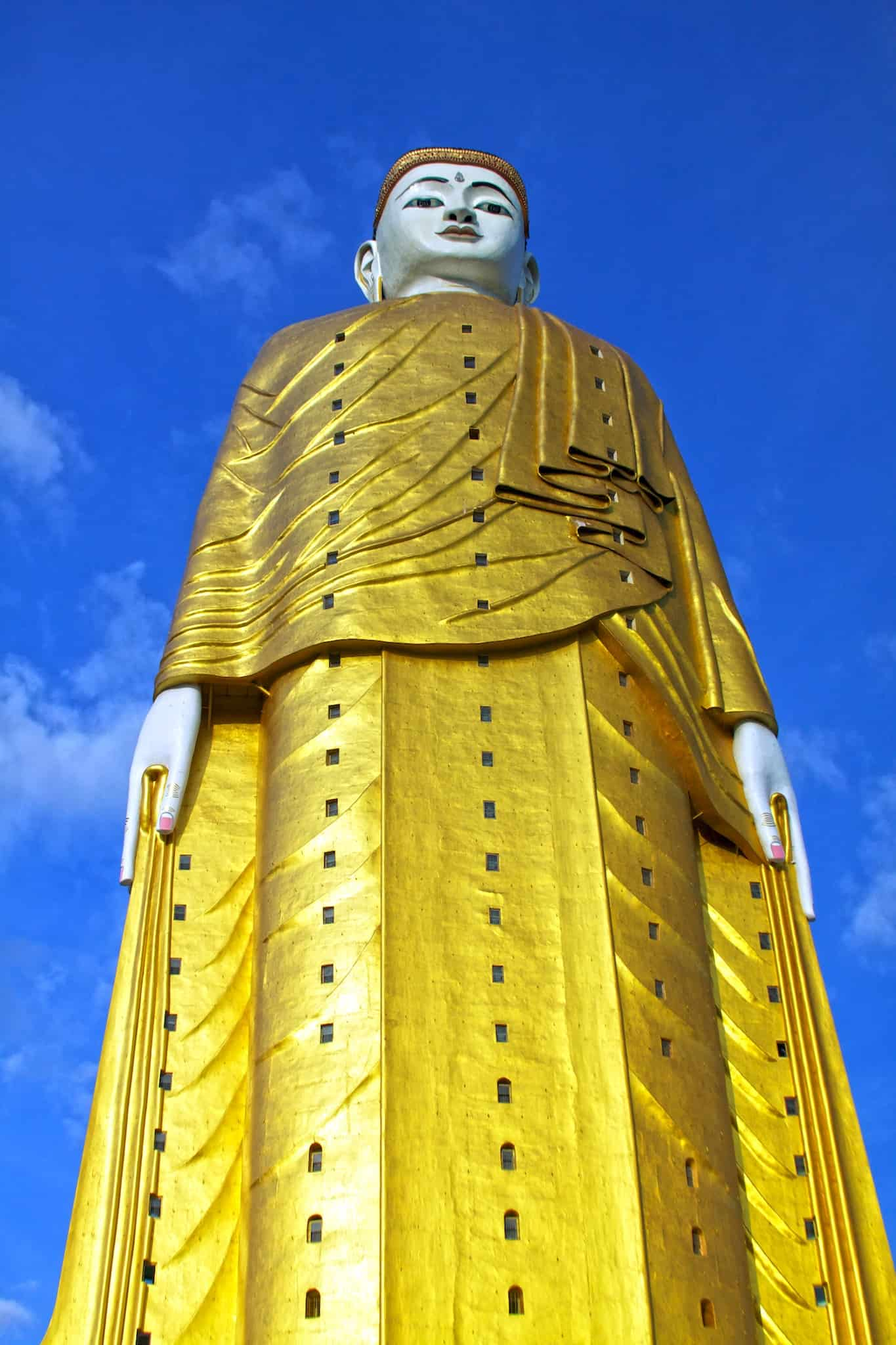The Spring Temple Buddha at a Glance
What is the Spring Temple Buddha, and where is it located?
The Spring Temple Buddha is the world’s second-tallest statue and the tallest bronze Buddha monument ever built, located in the Foquan Temple in Zhaocun Township, Pingdingshan City, Henan. It took 12 years to build and was completed in 2008.
What is the meaning of the symbols and gestures depicted in the Spring Temple Buddha statue?
The Spring Temple Buddha has a tiny reverse swastika carved into its breast, a symbol of good luck or spirituality used by many cultures in Asia. The style of palms and hands on the statue represents different messages, with the left palm, open and facing down, representing kindness, and the right palm, raised up and facing outward, representing teaching or reassurance.
Who is the person represented in the Spring Temple Buddha?
The Spring Temple Buddha is dedicated to Vairocana Buddha, considered the highest-ranking Buddha in the Buddhist pantheon. Vairocana Buddha is represented as one of the u0022self-bornu0022 Buddhas in various cultures, including Nepali, Tibetan, and Japanese, where he is called Dainichi Nyorai or u0022Great Sun Buddha.u0022
The Spring Temple Buddha is located at the Foquan Temple in Zhaocun Township, Pingdingshan City, Henan. With a total investment of 1.2 billion yuan or 140 million USD at the time, the Spring Temple Buddha stands at 420 feet or 128 meters tall. This makes it the world’s second-tallest statue and also the tallest bronze Buddha monument ever built. When it comes to Chinese tourism destinations, the Spring Temple Buddha statue is among the very best, with a 5A tourist attraction award from the government. The statue is surrounded by hills, rivers, and hot springs.

The construction of the Spring Temple Buddha began in 1997 and was finished 12 years later in 2008. On September 1, 2008, the statue was officially completed with a consecration. It is situated in the Fodushan Scenic Area.
The two pedestals of the Buddha statue were created by quarrying and rebuilding the hill on which they are currently standing. The monument marks the spot where a Buddhist temple named the Foquan Temple was built during the Tang dynasty (618–907 AD).

The giant Spring Temple Buddha took its name from the springs in the area. The springs produce 65,000 gallons (295 m3) of hot water at 147°F (64°C) every day, which is considered to have healing powers.
The Spring Temple Buddha’s History
The construction of the Spring Temple Buddha was announced shortly after the Taliban in Afghanistan destroyed 1500-year-old Buddha monuments in 2001 at the Bamiyan heritage site. The ancient stone monuments were built in the 6th century and once stood 125 feet or 38 meters (the Eastern Buddha) and 180 feet or 55 meters (the Western Buddha) tall.

The Western Buddha or the Great Buddha was once the tallest representation of a standing Buddha in the world. The monuments were severely damaged during the Soviet-Afghan conflict in 1979 but restored later.
Starting in 1997, the Spring Temple Buddha took 12 years to build and was finished in 2008. When it was completed, it took over Japan’s 330-foot-tall (100-meter) Ushiku Daibutsu of 1993. The Grand Buddha (289 ft; 88 m) monument in Ling Shan was the tallest monument in China until this new statue was completed.
The Spring Temple Buddha’s Height

The Spring Temple Buddha is the second tallest statue in the world. It is about 36 feet (11 m) shorter than the Pyramid of Cheops in Egypt but 115 feet (35 m) taller than the Statue of Liberty.
The total height of the Spring Temple Buddha reaches 682 feet (208 m). However, the body length of the Buddha is actually 354 feet (108 m).
This is because the statue stands on a 20-meter-tall lotus pedestal. There are also an 82-foot (25-meter)-tall Diamond Seat and a 180-foot (55-meter)-tall Sumeru Seat beneath the statue. With the two pedestals taken into account, the height of the statue can also be measured at 502 ft (153 m).

- The eyes of the Buddha are 6.2 ft (1.9 m) high and 12.9 ft (3.9 m) wide.
- The hands are 62.3 ft (19 m) high, 29.5 ft (9 m) wide, and 16.4 ft (5 m) thick.
- About 8.2 acres (3.3 ha) of space is taken up by the Diamond Seat, while another 13.2 acres (5.3 ha) is used for Sumeru Seat.
In this picturesque region around the Spring Temple Buddha also stands a 116-ton Bell of Good Luck, which, according to the Guinness World Records Book, is the largest bronze bell in the world that can be rung from the outside. The bell is located in the Foquan Temple which was built during the Tang dynasty (618–907 AD).

The Symbols and Meanings of the Spring Temple Buddha
The Spring Temple Buddha has a tiny reverse swastika carved into its breast. It is a symbol of good luck or spirituality widely used by many different cultures in Asia.

Mudra, which means “sign” or “seal” in Sanskrit, is the term used to describe the various hand gestures used to convey meaning in Buddha sculptures. The style of palms and hands on the Spring Temple Buddha statue represents different messages. His left palm, open and facing down, represents kindness, and his right palm, raised up and facing outward, represents the act of teaching or reassuring.

The Buddha of Spring Temple was built in a design called “Vihara Maitreya,” which represents the Buddha Maitreya in his role as a teacher.
Who is the Person in the Spring Temple Buddha?
So, who is the person represented in the Spring Temple Buddha? The Tianrui hot spring is where the Spring Temple Buddha got its name. However, the statue is dedicated to Vairocana Buddha. Vairocana (Sanskrit: “Illuminator”) Buddha is considered the highest-ranking Buddha in the Buddhist pantheon.

In Japanese, he is called Dainichi Nyorai (“Great Sun Buddha”), and in Tibetan, Rnam-snang (“Maker of Brilliant Light”). He is represented as one of the “self-born” Buddhas, including in Nepali, Tibetan, and Javanese art.
What is the Spring Temple Buddha Made of?

The gigantic Buddha statue is mainly made of steel and copper. Approximately 3,300 tons of copper, 238 pounds (108 kg) of gold, and over 15,000 tons of special steel were used in the making of the complete Buddha statue. The statue was constructed from 13,300 copper slabs and it covers an area of 121,600 square feet (11,300 sq m).
The Cost of the Statue
Despite the initial estimation of 55 million USD to build the Spring Temple Buddha complex and 18 million USD to build the statue alone in 2001, the temple cost around 1.2 billion yuan or 140 million USD (120 million Euros) at the time of completion in 2008.
Since then, additional adjustments have been made to the statue’s elaborately tiered foundation. In October 2008, two additional floors were added to the base.

The Chinese name of the statue, “Zhongyuan Great Buddha,” was written on the monument by the former president of the Buddhist Association of China, Master Xuecheng, and the president of the Hong Kong Buddhist Association, Master Jueguang. The words “The World’s Tallest Zhongyuan Great Buddha” were written by the founder of the Fo Guang Shan Buddhist Taiwan Monastery, Master Hsing Yun.
However, with the construction of the 597 feet (182 m)-tall Statue of Unity in 2018, the Spring Temple Buddha is no longer the tallest statue in the world. The Statue of Unity is located in Gujarat, India.
References
- Statue Definition & Meaning – Merriam-Webster
- The Location of the Spring Temple Buddha – Google Earth
- Tallest bronze sculpture – Guinness World Records






